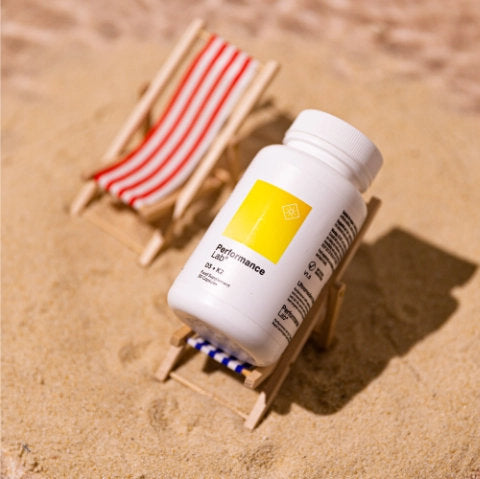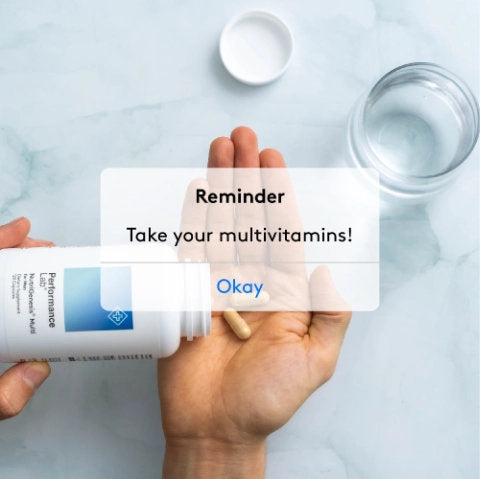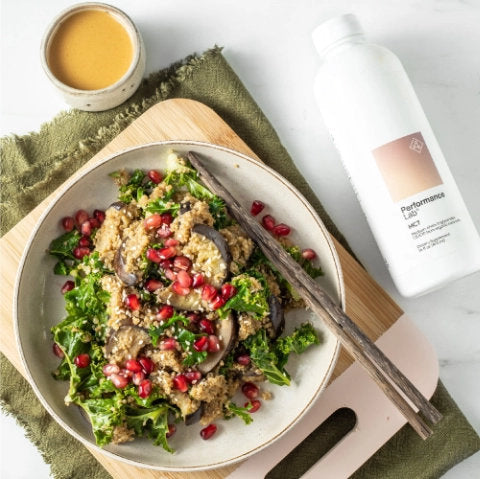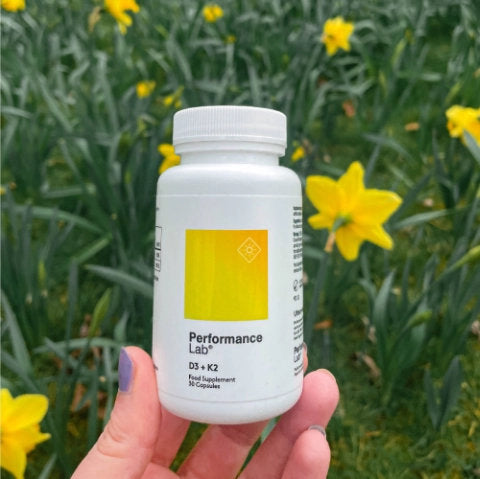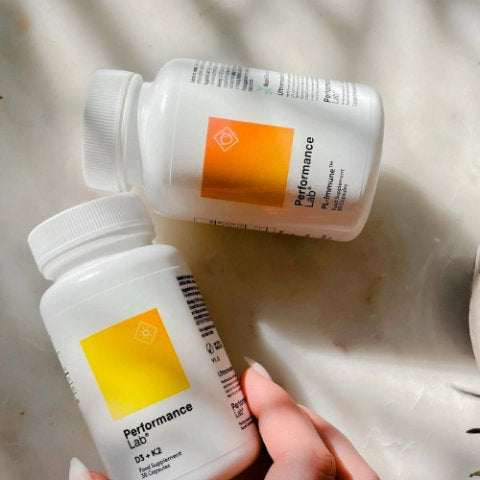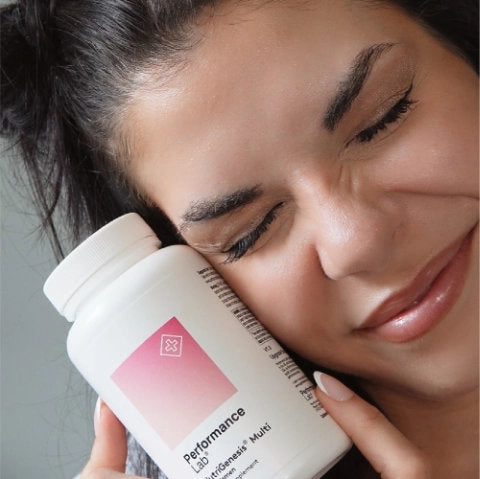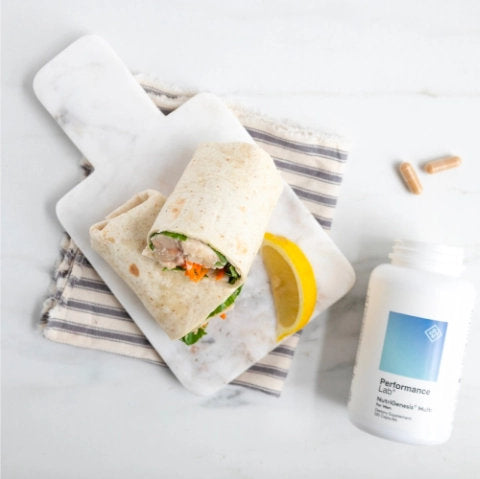To a point, exercise bolsters your overall health and fitness. Beyond that point, it can do the exact opposite.
Few understand this truth better than runners.
Though initially difficult to get into, like all aerobic cardio activities, running can be quite addictive.
The “runner’s high,” a feeling of euphoria associated with aerobic exercise, often compels runners to keep running...
…and running and running, until their legs nearly fall off at the hip.
While this is certainly a much lesser problem (if it even is a problem) than the problems associated with a sedentary lifestyle, there are certain adverse consequences after frequent running, most notably joint pain.
Virtually every serious runner has experienced some form of joint pain.
Whether due to an acute injury (e.g., rolling an ankle) or the gradual accumulation of running-related wear-and-tear on the joint’s tendons, ligaments, cartilage tissues, etc.
Aside from not running at all (as if that’s an option), what’s a runner to do?
How do runners protect their joints without compromising their exercise intensity and missing out on that beloved “runner’s high” feeling?
There are plenty options available to runners, some more common sense than others.
In this article, we cover several tips on how to protect your joints when running, as well as a full breakdown of Performance Lab® Flex, the best joint supplement for runners to both soothe and protect their achy joints.
Let’s start with the main question at hand:
How to Protect Your Joints When Running

First of all, let’s get something out of the way: long-distance running isn’t inherently bad for the joints. In fact, running with proper form, like strength-training, may even have a protective effect against long-term joint degradation.
Yet, all the same, there are certain factors worth taking into consideration to help protect your joints when running, as well as to improve your overall health and fitness in general.
A few key tips on supporting your joints without compromising your running performance include:
Maintain a Healthy Weight
Aside from boosting cardio health, one of the main reasons people run recreationally is to burn excess fat.
It's partly the reason why first-time runners, or those who haven’t run in a long time, often experience limiting joint pain after their first long-distance run: the excess weight places an exceptional stress-load on their joints.
This type of pain can be obviously discouraging for those who’ve yet to make an ingrained habit of running.
With that in mind, focusing on fat loss strategies while running is key to mitigating joint pain. For some, weight-related joint pain may be an inevitable hump to get over.
But by adhering to the following tips, you may help sustain your joint comfortability without accumulating too much pain.
Practice Good Form and Posture
Having good form and posture isn’t simply a matter of knowledge. We all know to sit up straight.
Yet, maintaining a straight-back sitting posture requires a degree of earned core strength.
Likewise, running with good form requires some practice and conditioning. From head to toe, good running form includes:
- Head – ears aligned with shoulders, eyes looking forward.
- Shoulders – pulled back, yet loose enough to move independently.
- Arms – 90-degree angle at the elbow, moving along a forward line.
- Hands – relaxed; squeezing your hands unnecessarily wastes energy.
- Torso – tight core; keep the spine long and tall, not hunches.
- Hips – lean slightly into the run, as opposed to completely upright.
- Knees – align knees with feet; don’t lift to 90-degrees on flat ground.
- Feet – stick to what works for you; research suggests that altering your foot-strike pattern, namely from rearfoot (heel) to midfoot or forefoot, may actually increase your risk of injury.
Don’t overthink any of these points. Just practice enough to establish a good kinesthetic flow, and you’re sure to notice an improvement in your running momentum and comfortability.
Avoid Running on Hard Surfaces
This is a tough piece of advice for many urban runners to follow.
Though there’s some contention over the seriousness of running on hard surfaces, such as concrete, or not, some research does agree that running on softer surfaces, such as grass or dirt trails, does reduce the total stress on the musculoskeletal system, as compared to running on more rigid surfaces, such as asphalt and concrete.
No doubt, it can be fun to run inner-city—to see your city with a moving, street-side, ground-level point of view—yet, if possible, opt for softer running surfaces.
Replace Your Well-Worn Shoes
The longer a piece of clothing is worn, the deeper the sentimental and emotional attachment to that piece of clothing.
All the same, it’s best not to get too attached to your favorite pair of running shoes, because, eventually, all running shoes get worn down and need replacement.
Especially as the soles along the heels become flimsier and less shock absorbent, a pair of well-worn shoes often fail to provide adequate running support, resulting in uneven weight distribution and, yes, joint issues.
Incorporate Strength Training
Is “overtraining” really a problem? Or at least a greater problem than undertraining? Really, it’s useless comparing the two, because neither are necessarily good for your health, including your joint health.
For avid long-distance runners, muscular overuse syndrome can be a serious detriment to their fitness, resulting in muscular injury and atrophy.
By incorporating strength-training with your running regimen, you may help combat running-related muscle atrophy while moderating your long-distance running training.
Stretch Daily
Unstretched muscle and tight muscle knots disrupt your kinesthetic flow, resulting in uneven concentrations in stress and form overcorrections that gradually impair your joints.
This is particularly true for hip joint-related pain, as we often overcompensate in our hip alignment while running and walking when we fail to adequately stretch.
Think about it this way: what’s the first thing cats and dogs do when they wake up? They stretch. This is such an important behavior for our fitness that even the animals are instinctively doing it.
Stretching daily can help re-open your circulation and even out the stress impact of running on your body, protecting your joints when running.
Take a Daily Joint Supplement
Joint supplements are more often discussed in the context of soothing already achy joints, whether due to age-related joint degradation or athletic wear-and-tear, than in the context of pre-ache joint protection.
However, with an effective comprehensive joint support stack, you can do both:
- soothe achy joints
- protect your joints from future aches and pains.
Keep reading to learn more about how a joint supplement can improve a runner’s joint fitness and performance:
How Joint Supplements Can Benefit Runners
While joint supplements aren’t exclusively beneficial to runners (e.g., bodybuilders and sports team athletes may also drastically improve their performance with a joint supplement), much of a runner’s quality of life is centrally dependent upon joint health.
With that in mind, an effective joint supplement can benefit runners in the following areas:
- Connective Tissue Integrity – tendons, ligaments, cartilage—the joint is a complex mechanism full of many overlapping tissues that must be both flexible and resilient enough to sustain active joint movement.
- Joint Lubrication – some joint-supportive compounds assist with the production and protection of synovial fluid, or synovia, the non-Newtonian liquid lubrication that ensures smooth, comfortable motion.
- Shock Absorption – by protecting against cartilage-diminishing enzymes and oxidative stress, while also promoting cartilage hydration, joint supplements can help maintain a good shock-absorbent cushion within the joint.
- Bone Strength – with bone-nourishing micronutrients, joint supplements help sustain a strong, healthy joint-bone connection for greater protection against injury.
- Repair and Regeneration – like skeletal muscle tissue, the tissues that comprise the joint also require a significant degree of post-exercise repair and regeneration; with joint-protective compounds and raw connective tissue building-blocks, a joint supplement can assist with post-running joint recovery.
And more.
Altogether, the running benefits of a joint supplement involve smoother range of motion, decreased joint stiffness, and overall greater comfortability for distraction-free running performance.
Like the Tin-Man of the Wizard of Oz, the human joints occasionally get creaky without any supplementary love. For the Tin-Man, that supplementary love comes in the form of a machine-lubricating oil can.
However, for us humans, we require something more organic.
Below is a list of the best all-natural joint support ingredients for running that help remove the creak from our running for an all-around boost on your athletic health, fitness, and performance.
Best Joint Supplements for Running
Though any one of these ingredients may improve your running game, stacking them altogether is the ideal strategy for improving your joint health and running performance.
A stack of the best joint supplement ingredients includes:
Turmeric
More than a tasty spice, turmeric is a superfood of the ancient Ayurvedic health tradition with pronounced benefits on many health systems ranging from brain health to skin health to joint performance. Curcumin, the primary bioactive constituent of turmeric, seems to benefit joint health by:
- Combating joint-diminishing oxidative stress (free radicals);
- Reducing inflammation for relief from pain and stiffness;
- Regulating COX-2 enzyme and advanced glycation end-products (AGEs);
- Supporting synthesis of collagen and other integral joint proteins;
- Protecting against cartilage-destructive MMP enzymes.
Turmeric is one of the best multi-purpose joint support ingredients for its capacity to simultaneously soothe already present joint pain while protecting against joint-damaging enzymes and stressors.
Not to mention that this herb is great for cognitive health and longevity.
Best Turmeric for Running: CurcuWIN®
Curcumin has been linked to improvements in joint pain, stiffness, and overall comfortability.
CurcuWIN® maximizes the joint and health benefits of turmeric by providing a potent extract standardized to 20% curcuminoids that’s 46x more bioavailable than standard turmeric powder supplements.
Boswellia Serrata
A somewhat unique supplement ingredient, Boswellia serrata is a desert tree that produces a bioactive gum resin rich in active boswellic acids, most notably AKBA (3-o-acetyl-11 keto-β-boswellic acid).
AKBA may help bolster joint health by modulating the immune response to mitigate excess inflammation, blocking cartilage-eating 5-LOX enzyme, and limiting tissue-weakening MMP enzyme.
Boswellia serrata’s combined bio-effects on inflammation and enzymatic joint degradation make this natural joint support herb a smart complement to turmeric’s joint-protecting benefits.
Best Boswellia Serrata for Running: AprèsFlex®
Standard Boswellia serrata has joint-soothing AKBA, but AprèsFlex® provides an even more potent Boswellia serrata extract, standardized to 20% AKBA in a delivery system with a 52% greater absorption rate than plain powder Boswellia serrata.
Glucosamine Sulfate
An amino sugar naturally found in joint tissues, glucosamine helps support the construction and integrity of cartilage, tendons, ligaments, and the synovial fluid that provide cushion support for joints.
By supporting the chondrocyte cells required for cartilage repair and regeneration while also optimizing synovial fluid for smooth, comfy range of motion, glucosamine is an essential micronutrient for joint health and longevity, especially when paired with chondroitin.
Best Glucosamine for Running: Glucosamine Sulfate 2KCl
Most glucosamine supplements are sourced from shellfish. However, corn-sourced glucosamine sulfate 2KCl offers a cleaner, greener, vegan-friendly alternative to shellfish-sourced glucosamine that offers all the same benefits of standard glucosamine without the allergen-risk presented by standard glucosamine’s fishy origins.
Chondroitin Sulfate
A complex of large molecules, chondroitin weaves through the extracellular matrix of cartilage to provide cartilage tissue with a negative, water-retaining charge.
When chondroitin levels drop, cartilage loses its water retention capacity, resulting in less cushy, dried-up cartilage and, consequently, decreased shock absorption and a greater risk of joint injury.
Supplementing chondroitin, especially with glucosamine, can help keep the joint well-cushioned and well-hydrated.
Best Chondroitin for Running: Phytodroitin™
Phytodroitin™ is a plant-based alternative to chondroitin, derived from seaweed extracts. Traditional chondroitin is often sourced from animal products like shark cartilage, pork byproducts, or bovine connective tissue. Phytodroitin™ offers a safe and sustainable substitute, free from controversial origins.
In Review: Performance Lab® Flex

The ultramodern joint stack for the ultramodern athlete, Performance Lab® Flex combines all the best research-backed joint support ingredients in an all-in-one daily formula that simultaneously soothes achy joints while protecting against future joint pain and degradation.
Whereas your standard joint supplement seems to focus exclusively on age-related joint issues, providing a limited range of poor quality shellfish-sourced ingredients, Performance Lab® Flex (Joint Support) addresses both athletic and age-related joint concerns with all-natural, fish-free botanicals and compounds, all of which combine for a synergy of joint-soothing, joint-protective benefits.
Key Benefits
- Comfort – soothes inflammation and stiffness for greater comfort
- Protection – combats oxidative stress and joint-damaging enzymes
- Lubrication – promotes healthy synovial fluid for smoother motion
- Bone Strength – bolsters bone mineral density and joint-end integrity
- Shock Absorption – keeps cartilage hydrated, springy, and cushiony
- Resilience – elevates the body’s natural resistance to degradation
Any one of Performance Lab® Flex’s ingredients may help improve joint health and fitness.
However, it’s the specific combination of these ingredients that comprehensively elevates all aspects of joint health and fitness.
From pain and stiffness relief to enhanced flexibility and range-of-motion, the joint benefits of Performance Lab® Flex are many.
Though ingredient choice plays a key role in Performance Lab® Flex’s advanced efficacy and safety, it’s the quality of these ingredients, as well as the way these ingredients are delivered, that ultimately sets this formula apart from anything else available on the market.
Key Features
Joint supplements have a shellfish problem. Though, yes, shellfish-sourced glucosamine and chondroitin may help boost joint health, they’re much less clean than the plant-based ingredients found in Performance Lab® Flex.
In terms of quality and cleanliness, the high points of Performance Lab® Flex’s formula include:
- Premium Brands - CurcuWIN®, AprèsFlex®, OptiMSM®—most of Flex’s ingredients are patented and backed by clinical research.
- Cleanly Sourced – no shellfish or animal origins, such as pork byproduct or bovine tissues; only clean, green, plant-based ingredients.
- Clinical Dosages – all ingredient dosages are delivered in clinically effective ranges; Flex also avoids proprietary blends to transparently showcase each individual dose.
Not to mention that Performance Lab® Flex’s all-natural formula comes encapsulated in all-natural NutriCaps®, a patented capsule constructed out of fermented tapioca (pullulan).
By avoiding synthetics and artificial additives, Performance Lab® Flex further promotes the enhanced bioavailability of its ingredients, ensuring greater absorption and quicker results with minimal risk of adverse side effects.
Safe for daily, long-term use, Performance Lab® Flex is a smart, easy addition for runners to protect their joint health and performance.
Supplement Facts: CurcuWIN® Turmeric (20% Curcuminoids), AprèsFlex® Boswellia serrata (20% 3-0-acetyl-11-keto-β-boswellic acid ), Glucosamine Sulfate 2KCL, Mythocondro® Chondroitin Sulfate, OptiMSM® Methylsulfonylmethane.
Summary
Though it’s important to take extra care of your joints while running, let’s not delude ourselves into thinking that running is outright bad for your joints. Running won’t ruin your knees, your hips, your ankles, and so on.
In fact, running with good form and with good shoes, in conjunction with strength-training, will most likely strengthen your joints much more so than a sedentary lifestyle.
However, like “tennis elbow,” there’s a reason why we often refer to knee pain as “runner’s knee.” As opposed to acute injuries, such as rolling an ankle or stubbing your foot while running, “runner’s knee” occurs gradually with a build-up of running-related wear-and-tear on your knee ligaments, tendons, cartilage, etc.
Much of this can be corrected by correcting your running form and picking out better well-cushioned running shoes. Yet, it’s also smart to take a natural joint supplement like Performance Lab® Flex to bolster your natural abilities to repair, regenerate, and protect your joints—from your knees to your ankles to elbows.
There are few things worse than being punished with life quality-impairing pain for an exercise activity that’s otherwise performed to improve your health and fitness and overall quality of life. By taking Performance Lab® Flex daily, you can better ensure that your health and fitness lifestyle stays healthy and fit.
References
- Riddle DL, Stratford PW. Body weight changes and corresponding changes in pain and function in persons with symptomatic knee osteoarthritis. A cohort study. Arthritis Care Res (Hoboken). 2013 Jan; 65(1): 15-22.
- Hamill J, Gruber AH. Is changing footstrike pattern beneficial to runners? J Sport Health Sci. 2017 Jun; 6(2): 146-153.
- Tessutti V et al. Attenuation of foot pressure during running on four different surfaces: asphalt, concrete, rubber, and natural grass. J Sports Sci. 2012; 30(14): 1545-50.
- Shakoor N et al. The Effects of Common Footwear on Joint Loading in Osteoarthritis of the Knee. Arthritis Care Res (Hoboken). 2010 Jul; 62(7): 917-923.
- Dressendorfer RH, Wade CE. The Muscular Overuse Syndrome in Long-Distance Runners. Phys Sportsmed. 1983 Nov; 11(11): 116-30.
- Shorter E et al. Skeletal Muscle Wasting and Its Relationship With Osteoarthritis: a Mini-Review of Mechanisms and Current Interventions. Curr Rheumatol Rep. 2019; 21(8): 40.
- Choi JH et al. The effects of taping, stretching, and joint exercise on hip joint flexibility and range of motion. J Phys Ther Sci. 2016 May; 28(5): 1665-1668.
- Daily JW et al. Efficacy of Turmeric Extracts and Curcumin for Alleviating the Symptoms of Joint Arthritis: A Systematic Review and Meta-Analysis of Randomized Clinical Trials. J Med Food. 2016 Aug 1; 19(8): 717-729.
- Siddiqui MZ. Boswellia Serrata, A Potential Antiinflammatory Agent: An Overview. Indian J Pharm Sci. 2011 May-Jun; 73(3): 255-261.
- Zhu X et al. Effectiveness and safety of glucosamine and chondroitin for the treatment of osteoarthritis: a meta-analysis of randomized controlled trials. J Orthop Surg Res. 2018; 13: 170.
- Henrotin Y et al. Chondroitin Sulfate in the Treatment of Osteoarthritis: From in Vitro Studies to Clinical Recommendations. Ther Adv Musculoskelet Dis. 2010 Dec; 2(6): 335-348.





